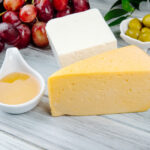When people hear the word agglomerát, it might sound complicated, but the idea is actually quite simple. Agglomerát is a man-made stone material created by mixing natural stone pieces or powders with a binding agent, usually resin or cement. The result looks very much like natural stone but is easier to produce in consistent shapes, sizes, and colors.
In today’s construction and design world, agglomerát has become an important choice because it combines the beauty of natural stone with the flexibility of engineered products. Architects, builders, and homeowners use it for everything from kitchen countertops and bathroom vanities to exterior wall cladding and staircases.
In this article, we will explore what agglomerát really means, where it comes from, how it is made, its main properties, the different ways it is used, and what advantages and challenges it brings. By the end, you will have a clear picture of whether agglomerát could be the right material for your own project.
The Origin and Meaning of Agglomerát
The word agglomerát comes from the idea of combining or clustering smaller pieces into a larger whole. In geology, “agglomerate” describes a rock formed from volcanic fragments that fused together after an eruption. In construction and design, the meaning is more specific. Here, agglomerát refers to engineered stone materials that are manufactured by binding crushed stone or stone powder with resins or other binders.
In many Central European languages, especially Hungarian, the term is widely used in the construction trade to describe products that look like marble or granite but are actually composite materials. This connection is important because it shows how agglomerát bridges the gap between the natural beauty of stone and the engineered control of modern materials. While natural stone is quarried directly from the earth, agglomerát is designed and produced in factories, giving it greater flexibility in terms of color, finish, and application.
Composition and Manufacturing Process
Agglomerát is created by carefully combining natural and synthetic components. The bulk of the material usually comes from marble, quartz, or granite powders, which make up about 90 percent of the final product. These powders are mixed with a binding material, often polyester resin or cement, which makes up the remaining 10 percent. Pigments can also be added to achieve specific colors or shades.
The process begins with crushing and grinding natural stone waste from quarries. Instead of discarding these small fragments, they are collected and repurposed. The stone powders are then blended with resins and other additives until they form a uniform mixture. This mixture is poured into molds and compressed under vacuum pressure to remove air bubbles and ensure density.
After curing, the slabs are polished to create a smooth surface with a glossy or matte finish. The final product looks strikingly similar to natural stone, yet it is more consistent in pattern and easier to cut into standard dimensions. This manufacturing method makes agglomerát both eco-friendly, since it uses stone waste, and practical, since it allows for efficient mass production.
Properties and Characteristics of Agglomerát
One of the key strengths of agglomerát is its durability. Because it is engineered under controlled conditions, it tends to have fewer natural weaknesses than quarried stone. The compression process increases density, giving the material high resistance to cracks, scratches, and every day wear.
Agglomerát also offers a consistent appearance. Natural stone often varies from slab to slab, which can make matching colors difficult in large projects. With agglomerát, uniform shades and patterns can be produced, ensuring a cohesive look. The polished surface adds an elegant, high-end touch to interiors while the material itself remains strong enough to handle demanding environments.
In terms of resistance, agglomerát generally performs well against moisture and stains, especially when treated with sealants. However, like many stone-based materials, it can be sensitive to strong chemicals or prolonged exposure to sunlight. Outdoor use is possible, but over many years some fading or dulling may occur, particularly with darker shades.
Common Applications of Agglomerát
Agglomerát has found a place in both interior and exterior design thanks to its balance of beauty and practicality.
In interior spaces, it is commonly used for flooring, offering a luxurious look similar to marble at a more affordable price. It is also a popular choice for kitchen countertops and bathroom vanities because of its smooth surface and wide range of available colors. Window sills made from agglomerát add a stylish finish that blends seamlessly with both modern and traditional designs.
For exterior applications, agglomerát is often seen on staircases, terraces, and façades. Its strength and uniform appearance make it an attractive solution for projects that need both visual impact and functional durability. From residential homes to public buildings, agglomerát serves as a versatile material that can be adapted to many different design goals.
Advantages of Choosing Agglomerát
There are several reasons why builders and homeowners increasingly turn to agglomerát. The first is cost efficiency. While natural stone can be expensive to quarry, transport, and cut, agglomerát is less costly to produce and install. This makes it more accessible to a wider range of projects without compromising on style.
Another advantage is design flexibility. Because agglomerát is manufactured, it can be created in a wide range of colors, patterns, and finishes that may not naturally exist in stone. This allows designers to choose exactly the look they want, whether that means a pure, uniform shade or a style that mimics the natural veining of marble.
Finally, agglomerát is more environmentally friendly than many alternatives. By reusing stone fragments and quarry by-products, it reduces waste and makes better use of natural resources. This adds to its appeal for those who value sustainable building practices.
Limitations and Considerations
While agglomerát has many advantages, it is important to be aware of its limitations. For one, it may not be as heat-resistant as some natural stones. Placing very hot items directly on a countertop can cause damage, so protective mats or trivets are recommended.
In outdoor settings, agglomerát can gradually lose some of its shine due to exposure to sunlight and weather. This does not necessarily affect the structural performance, but it can change the appearance over time. For projects that demand long-term brilliance outdoors, alternatives like granite or porcelain may be more suitable.
Agglomerát also requires professional installation. Because it is dense and heavy, handling the slabs incorrectly can lead to damage or improper fitting. Choosing experienced installers is essential to ensuring the material performs as expected.
Care and Maintenance Guidelines
Maintaining agglomerát is relatively simple, which is another reason it is so popular. For daily cleaning, a soft cloth and mild soap are usually enough to keep the surface looking polished. Harsh chemicals, however, should be avoided because they can dull the finish or damage the resin binder.
For interior applications, resealing the surface from time to time can help maintain stain resistance and prolong the material’s shine. In kitchens, it is best to wipe spills quickly, especially acidic substances like lemon juice or vinegar, which may etch the surface if left for long periods.
In outdoor applications, regular cleaning with water and gentle detergents helps remove dirt and dust. Periodic polishing may also be necessary to restore brightness if the material begins to lose its luster. By following these simple care routines, agglomerát can remain attractive and functional for many years.
Conclusion: Is Agglomerát the Right Material for You?
Agglomerát is a modern material that combines the elegance of natural stone with the convenience of engineered products. It offers durability, consistency, and a wide range of design choices, all at a more affordable price than many quarried stones. These qualities make it an excellent option for interior design, from floors and countertops to window sills and vanities.
At the same time, it is worth considering its limits. Agglomerát may not be the best choice for projects exposed to extreme heat or long-term outdoor sunlight if the goal is to preserve a polished finish indefinitely. With proper care, however, it remains a reliable and attractive option for both homes and commercial spaces.
If you are looking for a balance between beauty, performance, and cost, agglomerát is certainly a material worth considering. Understanding its composition, properties, and maintenance needs will help you decide whether it is the right fit for your design goals.
My name is Mustafa, and I have been blogging for over 5 years. I am passionate about sharing complete, accurate, and helpful information with my readers. Along with managing content on The Matcha Read, I also contribute blog posts to premium websites. My goal is to provide valuable insights in a clear and easy-to-understand way, so every reader walks away with useful knowledge.










